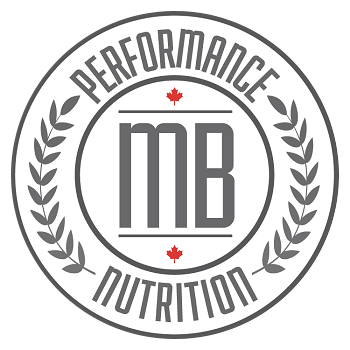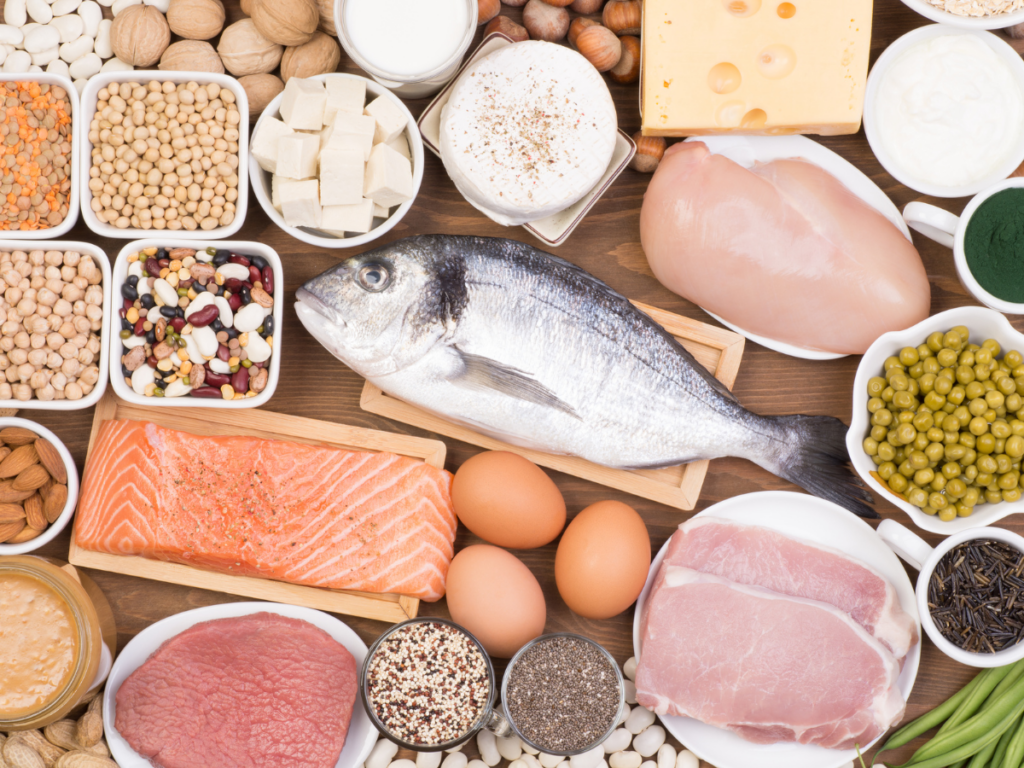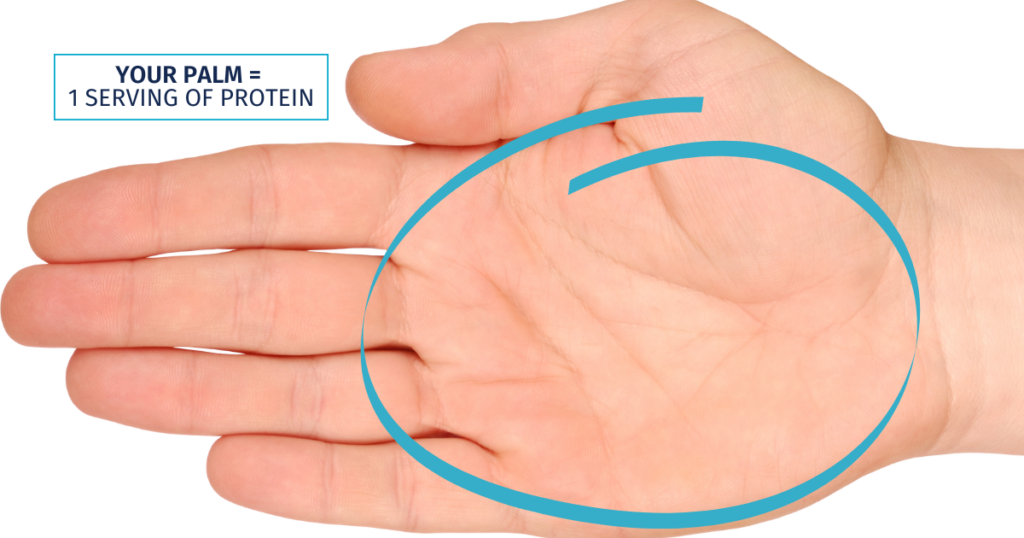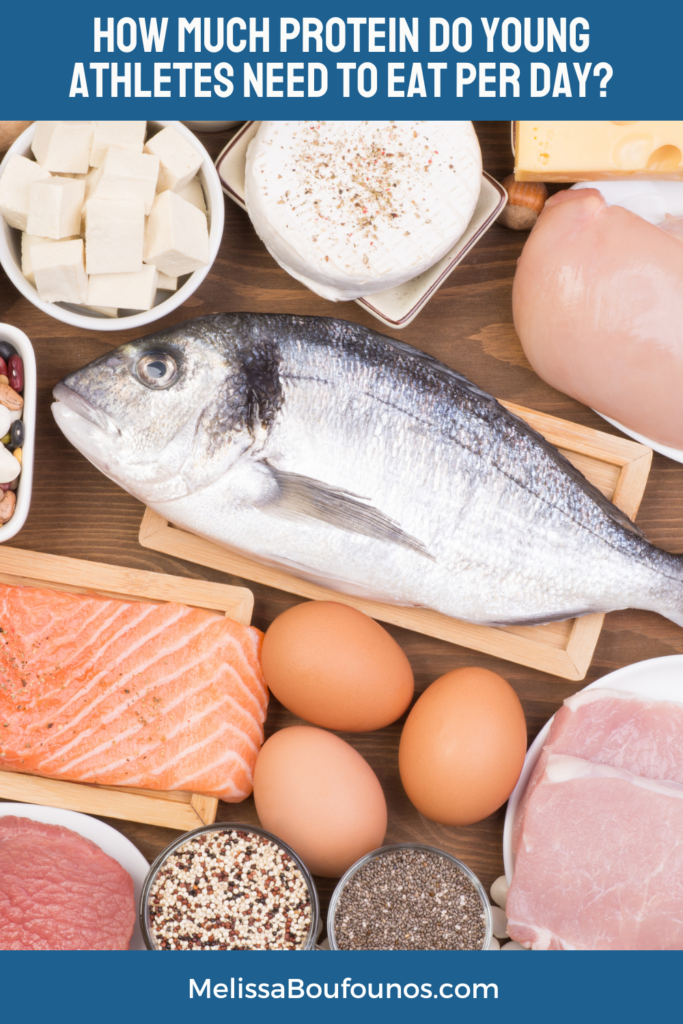Last updated on January 10th, 2024
Wondering how much protein young athletes need to eat every day? Here’s a hint: it’s probably more than they’re eating now.
There’s a common misconception that people eat too much, or at the very least, enough protein daily.
In reality, many people across all age groups and sexes don’t even meet the recommended dietary allowance (RDA) for protein.
In the United States, more than 20 percent of females aged nine to 13 and more than 10 percent of females aged 14 to 18 consume below the RDA. Over 10 percent of males aged nine to 13 are below the RDA for daily protein intake.
The RDA is the average daily dietary intake level sufficient to meet the nutrient requirement of 97 to 98 percent healthy individuals in a particular life stage and sex group.
Health Canada
Many studies show that sedentary people would benefit from more than the RDA for protein and that athletes require much more to maximize muscle strength and athletic performance.
We know the RDA for protein is just the bare minimum. It’s not good enough for teen athletes, especially at the elite level.
So, how much protein do young athletes need daily to support their growth and development and maximize their performance?
Optimal Daily Protein Intake for Teen Athletes
The RDAs for protein for children and adolescents in the United States and Canada are between 0.80 and 1.05 grams per kilogram of body weight.
While there are no long-term studies on optimal protein intake for children for ethical reasons, we can assume that, as with adults, these RDAs likely underestimate actual requirements.
Elite young athletes, like adult athletes, likely require an even higher amount of protein.
The American College of Sports Medicine, the Academy of Nutrition and Dietetics, and the Dietitians of Canada recommend that adults consume 1.2–2.0 g/kg of protein to optimize training recovery and promote muscle growth and maintenance.
The International Society of Sports Nutrition (ISSN) recommends a daily protein intake of 1.4–2.0 g/kg for physically active adults.
A short-term study on 14-year-old male soccer players found they needed to consume 1.4 g/kg of protein to balance nitrogen losses, suggesting that the protein requirements for adolescent male athletes are above the RDA.
Based on the available data, teen athletes will likely have similar protein requirements to those set for adult athletes.
Protein Distribution to Optimize Muscle Growth
The main thing for young athletes to focus on when it comes to building and maintaining muscle is their overall daily protein intake.
To build and grow muscles, athletes must strength train. The combination of an appropriate resistance training program and optimal daily protein intake facilitates muscle growth.
Muscle protein synthesis (MPS) is the process that repairs muscle damage that occurs during exercise and can lead to muscle growth.
Studies have shown that evenly distributing protein doses across the day can maximize MPS.
The general recommendation is to eat 0.25 g/kg of high-quality protein (20-40 grams) every three to four hours.
This is an effective feeding strategy for teen athletes during any muscle-building cycles of their training season.
Visual Tool to Measure Protein Portions
Measuring and weighing every piece of protein is not practical for young athletes and is not a strategy I recommend at this age.
Instead of doing math equations, I use a hand portion system with athletes.
The palm of your hand is approximately 3-4 oz, or one portion, of protein. For many common protein foods, this would provide 20-30 grams of protein.
Sources of High-Quality Protein
| Protein Source | Grams of Protein per Serving |
|---|---|
| Chicken (skinless), 3 oz | 28 |
| Steak, 3 oz | 26 |
| Turkey (roasted), 3 oz | 25 |
| Lamb, 3 oz | 23 |
| Pork, 3 oz | 22 |
| Salmon, 3 oz | 22 |
| Tuna, 3 oz | 22 |
| Shrimp, 3 oz | 20 |
| Eggs, 3 large | 18 |
| Greek yogurt, 6 oz | 18 |
| Bison, 3 oz | 18 |
| Tempeh, 100 grams | 18 |
| Lentils, 1 cup cooked | 18 |
| Black beans, 1 cup canned | 15 |
| Firm tofu, 100 grams | 12 |
Sources:
Bean, A. (2022). The Young Athlete. In The Complete Guide to Sports Nutrition (p. 254). chapter, Bloomsbury Sport.
Berryman, Claire E et al. “Protein intake trends and conformity with the Dietary Reference Intakes in the United States: analysis of the National Health and Nutrition Examination Survey, 2001-2014.” The American journal of clinical nutrition vol. 108,2 (2018): 405-413. doi:10.1093/ajcn/nqy088
Boisseau, N et al. “Protein requirements in male adolescent soccer players.” European journal of applied physiology vol. 100,1 (2007): 27-33. doi:10.1007/s00421-007-0400-4
Jäger, R., Kerksick, C.M., Campbell, B.I. et al. International Society of Sports Nutrition Position Stand: protein and exercise. J Int Soc Sports Nutr 14, 20 (2017). https://doi.org/10.1186/s12970-017-0177-8
Jeukendrup, A. E., & Gleeson, M. (2019). Young Athletes. In Sport nutrition (pp. 480–481). section, Human Kinetics.
Mangieri, H. R. (2017). Protein for Working Muscles. In Fueling young athletes (pp. 34–36). section, Human Kinetics.
Optimal Protein Intake Guide. Examine. Retrieved December 21, 2022, from https://examine.com/guides/protein-intake/





